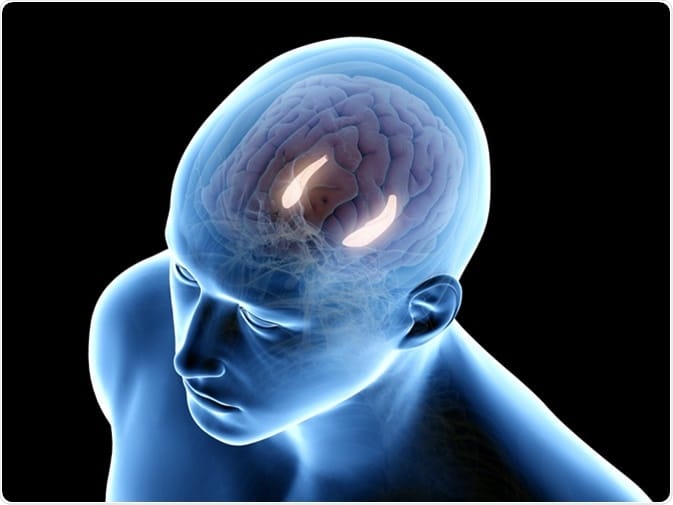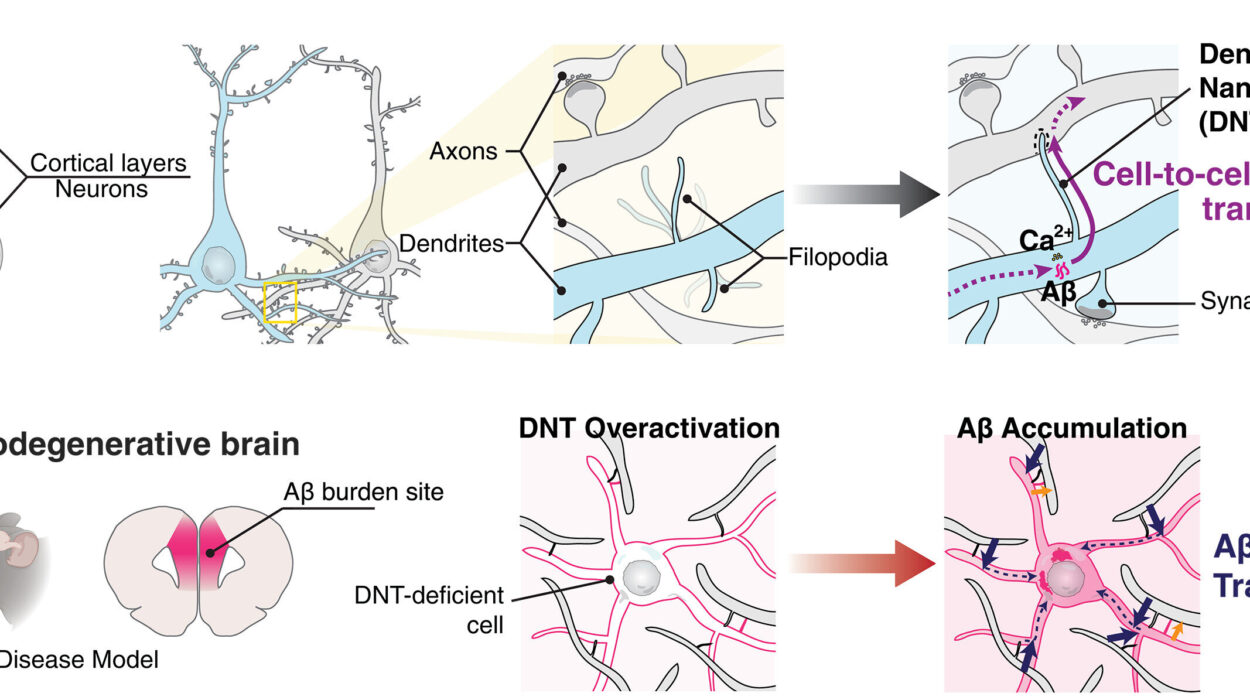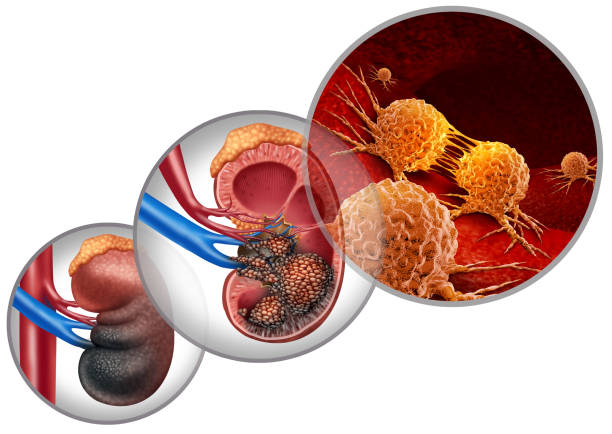Every thought you have ever had, every song lyric you’ve ever remembered, every sudden decision to run, to smile, to speak — all of it begins with a whisper between cells in your brain. But these whispers are not carried by air. They are electric pulses, chemical sparks, and microscopic dances between structures so small that millions could fit on the head of a pin.
The brain, weighing about three pounds, is often compared to a supercomputer. But in truth, it is far more sophisticated than any machine humans have ever built. At its core are neurons — specialized cells whose job is not just to exist, but to talk. They speak in a language that blends electricity and chemistry, a hybrid code capable of producing everything from reflexes to poetry.
To understand how neurons communicate is to peek into the essence of human experience. It is a journey into the circuitry of thought itself.
A Cell Unlike Any Other
Neurons are unlike most other cells in the body. While skin cells divide and replace themselves, many neurons are with you for life. Their shapes are bizarre compared to the round or oval shapes of other cells. A neuron has branching dendrites to receive messages, a long axon to send them, and a cell body — the soma — where decisions about those messages are made.
This shape is no accident. It is the product of millions of years of evolution, honed for one purpose: to process and transmit information. A single neuron can form thousands of connections, called synapses, with other neurons. This network of connections is so vast that the human brain contains an estimated 100 trillion synapses, making it one of the most complex structures known in the universe.
When you recall your first day of school, recognize a friend’s face in a crowd, or solve a tricky problem, it is because millions of neurons have fired in intricate patterns — a biological orchestra playing a score too fast for us to hear, but one we experience as thought.
Resting Potential: The Calm Before the Storm
At rest, a neuron is not idle. It maintains a delicate electrical balance across its membrane, known as the resting potential. This is achieved through the precise movement of ions — charged particles — across its cell membrane, mainly sodium (Na⁺) and potassium (K⁺) ions. Potassium tends to stay inside the cell, while sodium prefers the outside. This uneven distribution creates a voltage difference, typically around -70 millivolts inside relative to the outside.
This state is like a drawn bowstring — full of potential energy, waiting for the right signal to release. It’s not yet firing, but it’s ready, alert, like a runner poised at the start line.
The Spark of an Action Potential
When a neuron receives enough input from its neighbors — through chemical messages binding to receptors on its dendrites — the voltage inside the cell can shift. If that shift crosses a critical threshold, the neuron fires an action potential: a brief, rapid surge of electrical activity that races down the axon.
This firing is an all-or-nothing event. Either it happens fully, or it doesn’t happen at all. In the instant an action potential begins, sodium channels in the neuron’s membrane fly open, and sodium ions rush in. This sudden influx reverses the electrical charge inside the neuron, making it momentarily positive. Almost as quickly, potassium channels open to let potassium ions flow out, restoring the negative charge.
The action potential moves like a wave, regenerating itself along the axon. In myelinated neurons, the axon is wrapped in a fatty sheath called myelin, which acts like insulation on a wire. This allows the electrical signal to leap from one exposed gap, called a node of Ranvier, to the next. This “saltatory conduction” is far faster than an unmyelinated signal, enabling rapid responses — crucial for survival when milliseconds can mean the difference between catching a ball or missing it, between avoiding danger or being caught in it.
The Synapse: Where Electricity Meets Chemistry
The action potential’s destination is the axon terminal — the neuron’s output zone. But neurons do not physically touch. Between them lies a microscopic gap called the synaptic cleft. The action potential cannot jump this gap directly. Instead, the electrical message is transformed into a chemical one.
When the action potential reaches the terminal, it triggers the opening of calcium channels. Calcium floods in, prompting tiny sacs called synaptic vesicles to fuse with the membrane. These vesicles release their contents — neurotransmitters — into the synaptic cleft.
Neurotransmitters are the words and grammar of the neuron’s language. They drift across the gap and bind to receptors on the receiving neuron’s dendrites. Depending on the type of neurotransmitter and receptor, the effect may excite the next neuron, making it more likely to fire, or inhibit it, making firing less likely.
The Diversity of Neurotransmitters
The brain’s neurotransmitters are not all alike; each has a distinct personality and role.
Glutamate, the most abundant excitatory neurotransmitter, acts like a green light, pushing neurons toward firing. Gamma-aminobutyric acid (GABA) is the primary inhibitory neurotransmitter, serving as the red light that prevents runaway excitation — without it, seizures can occur.
Dopamine is involved in motivation, movement, and reward. It fuels the feeling of satisfaction when you achieve a goal and plays a role in disorders like Parkinson’s disease and addiction. Serotonin influences mood, appetite, and sleep, while acetylcholine helps control muscle movement and is vital for memory.
The balance of these chemicals determines not just whether a neuron fires, but how whole networks of neurons behave. A shift in neurotransmitter levels can alter emotions, change behavior, or even transform personality.
Plasticity: The Brain’s Ability to Adapt
Neurons are not fixed in their wiring. They are dynamic, constantly adjusting their connections in response to experience — a property known as synaptic plasticity. When two neurons fire together repeatedly, their connection can strengthen, making future communication easier. This principle, summarized as “neurons that fire together wire together,” underlies learning and memory.
Plasticity also works in reverse: unused connections can weaken or disappear, freeing up resources for more active pathways. This adaptability allows the brain to recover, at least partially, from injury, and to learn new skills at any age.
The very act of reading this sentence is changing your brain’s wiring, however subtly. Each new fact you learn, each skill you practice, reshapes the landscape of your neural connections.
Communication Gone Wrong
When neuronal communication falters, the effects can be devastating. Multiple sclerosis damages myelin, slowing or blocking action potentials. In Alzheimer’s disease, abnormal protein deposits disrupt synaptic communication and kill neurons. In epilepsy, uncontrolled bursts of neuronal firing cause seizures.
Even psychiatric disorders like depression, schizophrenia, and anxiety have roots in altered neurotransmitter signaling or dysfunctional neural circuits. Understanding how neurons communicate — and how that communication fails — is central to developing treatments.
The Role of Glia: The Silent Partners
Neurons do not work alone. Surrounding them are glial cells, once thought to be mere support structures. We now know they play active roles in communication. Astrocytes, for instance, regulate neurotransmitter levels in the synaptic cleft, ensuring signals are crisp and clear. Microglia act as the brain’s immune cells, responding to injury and pruning unnecessary synapses during development.
Oligodendrocytes produce myelin in the central nervous system, speeding up signal transmission. Without glia, the neuron’s intricate conversation would degrade into static.
The Neuron’s Time Scale: Milliseconds and Eternity
Neuronal communication operates at breathtaking speed. An action potential lasts just a few milliseconds, yet the patterns of firing can encode memories that last a lifetime. Some neurons in your brain right now are firing hundreds of times per second; others are silent until the right trigger arrives.
This temporal precision allows the brain to integrate vast amounts of information from different senses, coordinate complex movements, and respond instantly to threats. It is why you can hear a song, recognize the lyrics, recall the memory it evokes, and tap your foot in rhythm — all in perfect harmony.
Artificial Neurons and the Future of Brain Research
The study of neurons has inspired fields far beyond biology. Artificial neural networks, used in modern AI, borrow the concept of interconnected units that adjust their “weights” through learning. Though far simpler than the brain, these systems echo the principles of synaptic plasticity.
In neuroscience, new imaging technologies now allow scientists to watch neurons communicate in real time, even in living animals. Optogenetics enables researchers to control specific neurons with light, unraveling the circuits behind behaviors and emotions.
These advances hold promise for treating brain disorders, restoring lost senses, and perhaps one day enhancing memory or cognition. But they also raise ethical questions about how far we should go in altering the brain’s natural patterns.
The Poetry of Neural Communication
To reduce neurons to “electrical impulses” is to miss the wonder of their design. They are not cold wires; they are living cells that converse with a grace and complexity unmatched in nature. Their language is universal within the brain, yet infinitely adaptable, capable of producing every sensation, thought, and action you have ever known.
In a way, each of us is a story written in electrical and chemical code — a unique pattern of neural communication that changes over time, shaped by experience, memory, and imagination.
When you think of someone you love, remember a childhood smell, or imagine a future yet to come, you are witnessing the result of billions of neurons exchanging signals in perfect choreography. The brain’s conversations are invisible, but their results shape everything we are.
Conclusion: Listening to the Brain’s Secret Language
Decoding how neurons communicate is not just a scientific challenge; it is a philosophical one. It forces us to confront the mystery of consciousness: how does a network of cells, obeying the laws of chemistry and physics, give rise to the subjective richness of thought and feeling?
We do not yet have the full answer. But with every synapse we map, every firing pattern we record, we get closer to understanding the code. And in that understanding, there is a humbling truth: inside your skull is a living universe of conversation, happening at lightning speed, shaping your every moment.
The next time you have an idea, remember — it began with a single neuron, sending a signal to another, whispering in the silent, electric language of the brain.






